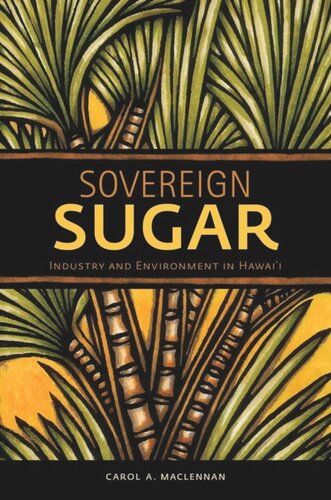

Most ebook files are in PDF format, so you can easily read them using various software such as Foxit Reader or directly on the Google Chrome browser.
Some ebook files are released by publishers in other formats such as .awz, .mobi, .epub, .fb2, etc. You may need to install specific software to read these formats on mobile/PC, such as Calibre.
Please read the tutorial at this link: https://ebookbell.com/faq
We offer FREE conversion to the popular formats you request; however, this may take some time. Therefore, right after payment, please email us, and we will try to provide the service as quickly as possible.
For some exceptional file formats or broken links (if any), please refrain from opening any disputes. Instead, email us first, and we will try to assist within a maximum of 6 hours.
EbookBell Team

0.0
0 reviewsAlthough little remains of Hawai‘i’s plantation economy, the sugar industry’s past dominance has created the Hawai‘i we see today. Many of the most pressing and controversial issues—urban and resort development, water rights, expansion of suburbs into agriculturally rich lands, pollution from herbicides, invasive species in native forests, an unsustainable economy—can be tied to Hawai‘i’s industrial sugar history.
Sovereign Sugar unravels the tangled relationship between the sugar industry and Hawai‘i’s cultural and natural landscapes. It is the first work to fully examine the complex tapestry of socioeconomic, political, and environmental forces that shaped sugar’s role in Hawai‘i. While early Polynesian and European influences on island ecosystems started the process of biological change, plantation agriculture, with its voracious need for land and water, profoundly altered Hawai‘i’s landscape.
MacLennan focuses on the rise of industrial and political power among the sugar planter elite and its political-ecological consequences. The book opens in the 1840s when the Hawaiian Islands were under the influence of American missionaries. Changes in property rights and the move toward Western governance, along with the demands of a growing industrial economy, pressed upon the new Hawaiian nation and its forests and water resources. Subsequent chapters trace island ecosystems, plantation communities, and natural resource policies through time—by the 1930s, the sugar economy engulfed both human and environmental landscapes. The author argues that sugar manufacture has not only significantly transformed Hawai‘i but its legacy provides lessons for future outcomes.